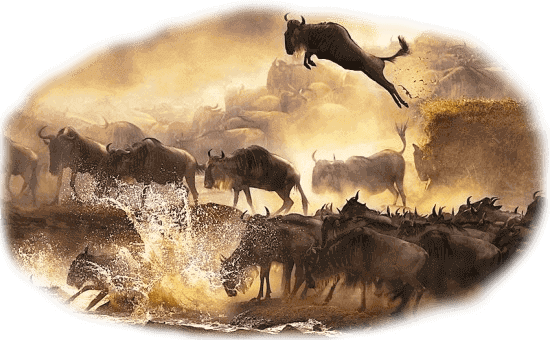 Kenya, located right on the equator, offers German holidaymakers a diverse climate perfect for a wide variety of vacation styles. From sun-soaked beaches on the Indian Ocean coast to the cool highland safaris of the interior, Kenya promises unique experiences shaped by its weather. Understanding the seasonal and regional variations can help German tourists plan an unforgettable trip. Kenya has two rainy seasons: the long rains from March to May and the short rains from October to December. These periods see lush, green landscapes and occasional travel disruptions. In contrast, the dry seasons from June to September and again from January to February offer ideal conditions for safaris and outdoor adventures. German travelers used to more structured seasonal patterns may find this tropical rhythm both refreshing and important to note when organizing their itinerary. Nairobi, the capital city situated at an elevation of about 1,800 meters, enjoys a temperate climate with warm days and cool nights. This makes it an excellent year-round destination for city exploration and nearby wildlife parks. In contrast, the coastal regions like Mombasa and Diani Beach are hot and humid, with temperatures often exceeding 30°C. These areas are perfect for beach holidays, particularly from December to March when humidity is lower and skies are typically clear. For those venturing into the highlands or visiting Mount Kenya, packing for cooler weather is advisable. These regions can be quite chilly at night, especially during the dry months. Lightweight clothing works during the day, but a fleece or jacket is useful for early mornings and evenings. Meanwhile, in lower altitude regions, breathable fabrics, hats, and sun protection are essential due to the intense equatorial sun. German tourists heading on safari should consider visiting during the dry seasons when wildlife congregates around shrinking water sources, making for easy and exciting viewing. The Maasai Mara, for example, is world-famous for the Great Migration, best witnessed from July to October. On the other hand, those seeking more affordable travel can explore during the rainy months when accommodations are cheaper and the landscapes are strikingly green. This Kenya climate guide for German tourists emphasizes the value of planning ahead and packing appropriately based on specific destinations and travel seasons. Whether you’re chasing wildlife through savannahs, trekking misty mountains, or lounging on sunlit beaches, Kenya's climate plays a crucial role in shaping your adventure. Knowing what to expect ensures that German holidaymakers can make the most of their East African getaway.
Kenya, located right on the equator, offers German holidaymakers a diverse climate perfect for a wide variety of vacation styles. From sun-soaked beaches on the Indian Ocean coast to the cool highland safaris of the interior, Kenya promises unique experiences shaped by its weather. Understanding the seasonal and regional variations can help German tourists plan an unforgettable trip. Kenya has two rainy seasons: the long rains from March to May and the short rains from October to December. These periods see lush, green landscapes and occasional travel disruptions. In contrast, the dry seasons from June to September and again from January to February offer ideal conditions for safaris and outdoor adventures. German travelers used to more structured seasonal patterns may find this tropical rhythm both refreshing and important to note when organizing their itinerary. Nairobi, the capital city situated at an elevation of about 1,800 meters, enjoys a temperate climate with warm days and cool nights. This makes it an excellent year-round destination for city exploration and nearby wildlife parks. In contrast, the coastal regions like Mombasa and Diani Beach are hot and humid, with temperatures often exceeding 30°C. These areas are perfect for beach holidays, particularly from December to March when humidity is lower and skies are typically clear. For those venturing into the highlands or visiting Mount Kenya, packing for cooler weather is advisable. These regions can be quite chilly at night, especially during the dry months. Lightweight clothing works during the day, but a fleece or jacket is useful for early mornings and evenings. Meanwhile, in lower altitude regions, breathable fabrics, hats, and sun protection are essential due to the intense equatorial sun. German tourists heading on safari should consider visiting during the dry seasons when wildlife congregates around shrinking water sources, making for easy and exciting viewing. The Maasai Mara, for example, is world-famous for the Great Migration, best witnessed from July to October. On the other hand, those seeking more affordable travel can explore during the rainy months when accommodations are cheaper and the landscapes are strikingly green. This Kenya climate guide for German tourists emphasizes the value of planning ahead and packing appropriately based on specific destinations and travel seasons. Whether you’re chasing wildlife through savannahs, trekking misty mountains, or lounging on sunlit beaches, Kenya's climate plays a crucial role in shaping your adventure. Knowing what to expect ensures that German holidaymakers can make the most of their East African getaway.
Kenya Travel Planner: Weather Highlights for German Tourists
| Region | Best Time to Visit | Climate Highlights | Activities |
|---|---|---|---|
| Nairobi | June to September | Mild, dry, cool evenings | City tours, safaris |
| Mombasa Coast | December to March | Hot, sunny, lower humidity | Beaches, water sports |
| Maasai Mara | July to October | Dry, ideal for wildlife viewing | Safari, Great Migration |
| Mount Kenya | January to February | Clear skies, cool temperatures | Hiking, climbing |
| Lake Victoria | June to October | Warm, occasional showers | Fishing, birdwatching |
Understanding Kenya’s Weather: Plan Your Perfect Holiday
Kenya's unique geographic location along the equator provides German tourists with an extraordinary mix of weather conditions that cater to every kind of traveler. From the tropical humidity of the coast to the temperate breezes of the highlands and the semi-arid plains of the savannah, Kenya's climate varies significantly by region and season. For those planning a dream holiday, understanding these variations can make all the difference. The country's weather is primarily divided into two rainy seasons and two dry periods. The long rains occur between March and May, bringing lush greenery but also potential disruptions to travel plans. The short rains follow from October to December, offering intermittent showers and refreshingly vibrant landscapes. The dry seasons January to February and June to September are the best times for outdoor adventures like hiking, safaris, and beach relaxation. These months provide clearer skies, easier wildlife spotting, and more comfortable travel conditions. Nairobi, sitting at an altitude of about 1,800 meters, enjoys mild temperatures throughout the year. Daytime highs average around 25°C, while nights can dip to 10°C, especially during the cooler months. This makes it ideal for city tours and nearby wildlife excursions. Coastal regions like Mombasa, on the other hand, are warm and humid year-round, with temperatures hovering around 30°C. The best time to visit the coast is during the dry months, when the sun is strong, the skies are clear, and the sea is perfect for swimming and water sports. The highland regions and areas around Mount Kenya offer a completely different experience. These parts are cooler and can get quite chilly at night. They're excellent for travelers interested in hiking, exploring forest reserves, or seeking a break from the coastal heat. German tourists should be mindful of the altitude and temperature shifts and pack accordingly. Timing your trip with Kenya's climate in mind allows for optimal planning, particularly if you wish to witness the Great Migration in the Maasai Mara or enjoy a tranquil escape to the beaches of Diani. Using a climate-based Kenya travel checklist for German visitors ensures you're well-prepared for each region's specific weather patterns, helping to avoid surprises and maximize comfort. Whether you're navigating Nairobi's vibrant streets, trekking up forested slopes, or soaking in the Indian Ocean breeze, Kenya's climate defines your experience at every step. The country offers an impressive range of conditions that shape not just your wardrobe, but also the activities and experiences available to you. For example, dry months make wildlife safaris more rewarding, while the rainy seasons transform the landscape into a lush paradise with fewer tourists. German holidaymakers can benefit immensely from considering regional climates when planning their trip. Understanding that the weather in Nairobi differs significantly from that of Mombasa or the Maasai Mara can enhance comfort, enjoyment, and overall travel satisfaction. Always check seasonal trends and local forecasts before finalizing your itinerary. With a bit of foresight and seasonal awareness, your East African adventure can be as smooth, enriching, and unforgettable as the destination itself.
Weather Patterns by Season and Region in Kenya
Kenya's climate is a patchwork of regional contrasts that align with its diverse geography, making it an exciting destination for German tourists. The country's position on the equator means that it doesn’t experience four distinct seasons like Germany does. Instead, Kenya has alternating wet and dry periods, influenced primarily by altitude and proximity to bodies of water like the Indian Ocean and Lake Victoria. The long rainy season typically spans from March to May. During this time, the country transforms into a green paradise, especially in the central highlands and western Kenya. However, heavy rains can make rural travel more challenging, and some safari trails might become muddy and harder to navigate. The short rains occur between October and December and are usually lighter, falling mainly in the afternoons and not interfering too much with outdoor plans. The dry seasons January to February and June to September are the most popular times to visit. These periods offer plenty of sunshine, clear skies, and excellent conditions for wildlife viewing. In these months, animals gather around waterholes and rivers, making national parks like Amboseli and the Maasai Mara perfect for safaris. For those heading to the coast, the same dry seasons provide warm and sunny weather, ideal for beach vacations, snorkeling, and diving. Regional climate variations are also important to understand. Nairobi, in the central highlands, enjoys moderate weather year-round due to its elevation. Daytime temperatures usually hover around 24°C, with cooler nights. Meanwhile, Mombasa and the coastal strip are typically hot and humid. Daytime temperatures can exceed 30°C, but sea breezes help temper the heat. The Rift Valley and western regions such as Kisumu experience more rainfall throughout the year, making them lush but occasionally wet and humid. Tourists planning their trip around Kenya’s weather should also consider elevation. Mount Kenya and its surrounding areas can be surprisingly cold, especially at night. German travelers interested in hiking or climbing should prepare for temperatures that dip below freezing at higher altitudes. Kenya's climate shifts from dry savannahs to cool highlands and sultry coastlines. Understanding these seasonal and regional weather patterns allows visitors to plan smarter and make the most of their experience. Whether you are exploring the urban energy of Nairobi, enjoying the sea breeze in Diani, or marveling at elephants beneath Mount Kilimanjaro, Kenya's climate sets the rhythm of your adventure.
Pack Smart for Kenya: A Climate Overview for German Guests
 Packing smartly for Kenya can make a world of difference, especially for German tourists experiencing Africa’s equatorial climate for the first time. Kenya's diverse geography from coastal beaches to highland savannahs demands a flexible wardrobe suited to different conditions. In Nairobi and other highland areas, layering is essential. Days are typically sunny and warm, with temperatures averaging around 24°C, but nights can be quite cool, dropping to about 10°C. A light jacket or fleece is a must for evenings, especially during the dry months. Comfortable walking shoes, breathable cotton clothing, and a wide-brimmed hat help for day trips and safaris in these regions. If your journey includes time in Mombasa or Diani on the coast, prepare for hot and humid weather. Loose-fitting clothes made of natural fabrics like cotton or linen are ideal. Sandals, swimwear, and sun protection gear sunglasses, hats, and high-SPF sunscreen are essential for enjoying the beaches. Don’t forget insect repellent, as mosquitoes are common in coastal and tropical zones. During the rainy seasons March to May and October to December it’s wise to pack a waterproof jacket, an umbrella, and shoes with good grip for wet conditions. The rains usually come in short bursts, often in the afternoon, so your day won't necessarily be washed out. Quick-dry clothing and waterproof bags for electronics are also advisable. Travelers heading to Mount Kenya or other elevated terrains should be prepared for much colder conditions. At higher altitudes, temperatures can dip below freezing at night. Layered clothing, thermals, gloves, and a warm hat will ensure comfort and safety. Hiking boots with ankle support are recommended for mountain treks. In Kenya’s rural or more conservative areas, modest dress is appreciated. Lightweight trousers, long skirts, and tops with sleeves are respectful choices when visiting villages or religious sites. In urban centers, however, casual western wear is common and widely accepted. So, what clothes to pack for Kenya trip from Germany? The answer lies in variety and practicality. Think lightweight yet versatile: breathable clothes for hot days, warm layers for cooler evenings, and rain gear for tropical downpours. Don’t overpack, but do cover all climate scenarios based on your travel route. With the right preparation, your Kenyan holiday can be more about discovery and less about discomfort. Planning your wardrobe according to the climate will enhance every experience whether you're tracking lions on safari, snorkeling off the coast, or enjoying a cultural tour in Nairobi.
Packing smartly for Kenya can make a world of difference, especially for German tourists experiencing Africa’s equatorial climate for the first time. Kenya's diverse geography from coastal beaches to highland savannahs demands a flexible wardrobe suited to different conditions. In Nairobi and other highland areas, layering is essential. Days are typically sunny and warm, with temperatures averaging around 24°C, but nights can be quite cool, dropping to about 10°C. A light jacket or fleece is a must for evenings, especially during the dry months. Comfortable walking shoes, breathable cotton clothing, and a wide-brimmed hat help for day trips and safaris in these regions. If your journey includes time in Mombasa or Diani on the coast, prepare for hot and humid weather. Loose-fitting clothes made of natural fabrics like cotton or linen are ideal. Sandals, swimwear, and sun protection gear sunglasses, hats, and high-SPF sunscreen are essential for enjoying the beaches. Don’t forget insect repellent, as mosquitoes are common in coastal and tropical zones. During the rainy seasons March to May and October to December it’s wise to pack a waterproof jacket, an umbrella, and shoes with good grip for wet conditions. The rains usually come in short bursts, often in the afternoon, so your day won't necessarily be washed out. Quick-dry clothing and waterproof bags for electronics are also advisable. Travelers heading to Mount Kenya or other elevated terrains should be prepared for much colder conditions. At higher altitudes, temperatures can dip below freezing at night. Layered clothing, thermals, gloves, and a warm hat will ensure comfort and safety. Hiking boots with ankle support are recommended for mountain treks. In Kenya’s rural or more conservative areas, modest dress is appreciated. Lightweight trousers, long skirts, and tops with sleeves are respectful choices when visiting villages or religious sites. In urban centers, however, casual western wear is common and widely accepted. So, what clothes to pack for Kenya trip from Germany? The answer lies in variety and practicality. Think lightweight yet versatile: breathable clothes for hot days, warm layers for cooler evenings, and rain gear for tropical downpours. Don’t overpack, but do cover all climate scenarios based on your travel route. With the right preparation, your Kenyan holiday can be more about discovery and less about discomfort. Planning your wardrobe according to the climate will enhance every experience whether you're tracking lions on safari, snorkeling off the coast, or enjoying a cultural tour in Nairobi.
Essential Packing Tips for Different Kenyan Climates
Kenya's varied climate zones mean that thoughtful packing is crucial to enjoying your holiday comfortably. From the cool mornings in Nairobi to the tropical heat of Mombasa, German tourists should be prepared for multiple weather conditions. Here are six well-explained tips to help you pack smart:
- Layering is key for highland regions: Areas like Nairobi and Mount Kenya can be warm by day and chilly at night. Bring lightweight clothes for the daytime, and pack a fleece or jacket for cooler evenings.
- Pack light, breathable clothes for the coast: Mombasa, Diani, and other coastal destinations are hot and humid. Choose cotton or linen fabrics, short sleeves, and include swimwear and sandals for beach days.
- Rain gear is essential during wet seasons: If traveling from March to May or October to December, pack a light raincoat, umbrella, and waterproof shoes. Quick-drying clothes and a dry bag for electronics are also recommended.
- Neutral tones and comfort for safaris: Earthy colors like khaki and olive are ideal for blending into the environment and staying cool. Closed shoes, a wide-brim hat, and UV-protection sunglasses will also serve you well.
- Warm clothing for elevated or mountainous areas: If you plan to trek Mount Kenya or visit areas above 2,000 meters, be prepared for near-freezing temperatures at night. Thermals, gloves, and a warm hat will ensure comfort.
- Respect local customs with modest outfits: In rural or religious areas, modest dress is appreciated. Lightweight long trousers, skirts, and tops with sleeves are respectful choices, while cities allow for more casual wear.
These tips will help you adapt to Kenya's dynamic climate and ensure your trip remains comfortable and stress-free from start to finish.
From Nairobi to the Coast: Kenya’s Weather Demystified
Kenya's diverse geography accounts for its equally diverse climate, which ranges from the cool, dry highlands to the warm, humid coastline. German holidaymakers traveling across the country will quickly notice how much the weather shifts depending on location and altitude. Inland regions such as Nairobi, which sits at around 1,800 meters above sea level, enjoy a temperate climate year-round. Daytime temperatures average around 25°C, while nights can be significantly cooler, dropping to around 10°C, especially during the dry months from June to September and January to February. The air is dry and pleasant, ideal for city exploration or embarking on a safari in nearby national parks. Moving westward, areas along the Great Rift Valley and around Lake Victoria receive more rainfall than the central regions. These areas are lush and green but can be quite humid and occasionally muddy during the rainy seasons. The scenery here is stunning, and wildlife is abundant, but travelers should be prepared for sudden weather changes. In stark contrast, the coast including destinations like Mombasa, Malindi, and Diani Beach offers a hot and humid tropical climate. Daytime temperatures frequently reach 30–32°C, and even the nights remain warm. The coastal Kenya climate for German sun-seekers is particularly appealing from December to March, when humidity is slightly lower and the skies are clear. These months are perfect for beach holidays, diving excursions, and soaking up the sun along the Indian Ocean. Sea breezes help moderate the coastal heat, but the intense equatorial sun makes sunscreen, sunglasses, and hats absolute essentials. Rainfall at the coast is heaviest during April and May, though short showers may still occur between October and December. Despite the rain, temperatures remain high, and the region retains its lush, tropical feel. Understanding the regional differences in Kenya's weather is crucial for planning the ideal trip. Whether you're exploring the urban energy of Nairobi, enjoying the cooler air of the highlands, or relaxing on the sun-drenched beaches of the coast, knowing what to expect from the climate allows you to make the most of each location. Each region offers a unique experience, and with proper timing, German tourists can enjoy the best of all worlds. The key is to align your travel plans with the weather patterns, ensuring you arrive when conditions are most favorable for your preferred activities be it wildlife spotting, hiking, or sunbathing. For instance, the dry season from June to September is perfect for safaris in the Maasai Mara, where animals gather at water sources and vegetation is sparse, making wildlife easier to spot. Meanwhile, January and February also provide good weather for game drives and photography, with clear skies and warm days. If your goal is to unwind on white-sand beaches or enjoy water sports, visiting the coast between December and March is ideal. These months offer plenty of sunshine and relatively low humidity, making the beaches of Diani and Malindi particularly inviting. By understanding and planning around Kenya's regional climate differences, German tourists can maximize the enjoyment and efficiency of their trip, ensuring that every moment is spent in the best conditions the country has to offer.
Climate Differences Between Inland, Highlands, and Coast
Kenya is a land of climatic contrasts, offering a rich mix of weather experiences for every type of traveler. For German tourists, these differences can play a significant role in shaping the itinerary, packing strategy, and overall enjoyment of the trip. From the heart of the country’s elevated highlands to its sun-drenched coast, Kenya’s varied geography creates distinct climate zones worth understanding in detail. The inland areas, particularly around Nairobi, offer a temperate climate that remains relatively consistent throughout the year. With Nairobi sitting at around 1,800 meters above sea level, the temperatures are moderate warm during the day and cool at night. This makes the region particularly suitable for city tours, cultural excursions, and nearby wildlife safaris. Even during the rainy seasons, showers tend to be brief, allowing for uninterrupted daytime exploration. The highlands, which encompass areas around Mount Kenya and parts of the Rift Valley, offer cooler and sometimes even cold weather, especially at higher altitudes. In these zones, temperatures can fall below freezing during the night. These areas are ideal for hiking, climbing, and scenic retreats but require travelers to pack warm clothing regardless of the time of year. The air is crisp and clean, with green landscapes shaped by consistent rainfall and elevation. In contrast, Kenya’s coast tells a completely different story. Cities like Mombasa, Malindi, and Diani are hot and humid, with daytime highs frequently reaching over 30°C. This region has a distinctly tropical climate influenced by the Indian Ocean. The months from December to March are especially attractive due to lower humidity and sunny skies, drawing beachgoers and water sport enthusiasts from around the world. For German travelers seeking warmth and sunshine, the climate in the coast of Kenya for German sun-seekers delivers just that a welcome escape from the European winter. Rainfall patterns also vary across these regions. While the coast experiences its heaviest rains in April and May, inland and highland areas see more spread-out showers during both the long and short rainy seasons. Nevertheless, the weather tends to shift rapidly in Kenya, meaning that even during rainy periods, there are plenty of clear hours each day to explore and enjoy. Knowing the distinct climates between Kenya's inland, highland, and coastal regions allows German holidaymakers to plan better and travel smarter. It helps tailor your experience whether you're safari-bound, scaling misty peaks, or lounging on a coral-sanded beach to ensure every moment aligns perfectly with the natural rhythm of the land.
When to Visit Kenya: Climate Insights for German Tourists
 Deciding when to visit Kenya can significantly influence the kind of experiences travelers will have. German tourists, in particular, benefit from planning around Kenya’s unique climate, which is dictated more by wet and dry seasons than by the four-season model familiar in Europe. For wildlife safaris, the dry seasons are the best bet. From June to October and again from January to February, national parks like Maasai Mara and Amboseli offer prime animal viewing. Vegetation is thinner and wildlife tends to congregate around water sources, making it easier to spot elephants, lions, zebras, and more. Photographers and wildlife lovers alike will find these months especially rewarding. If a beach holiday is on the agenda, the stretch from December to March is ideal. This is when Kenya’s coastal areas, including Mombasa and Diani Beach, are hot and sunny, but with relatively low humidity. The ocean is warm, the skies are generally clear, and conditions are perfect for snorkeling, swimming, or simply lounging in the sun. April and May bring the long rains, which can be disruptive to travel plans across much of Kenya. Heavy downpours can lead to muddy conditions, particularly in rural and remote areas, making some roads impassable. National parks may become harder to navigate, and certain outdoor activities like hiking or game drives might be postponed due to poor weather. This rainy season transforms the landscape into a lush, green paradise. The scenery is breathtaking, and birdwatching opportunities are abundant as migratory species arrive. Moreover, for German tourists looking to avoid crowds, this period is ideal. Fewer travelers mean more tranquil experiences and less competition for popular accommodations and tours. An added benefit is affordability many lodges and resorts offer off-peak rates, providing excellent value. If you don't mind occasional showers and prefer a more peaceful, budget-friendly vacation, April and May can still be a rewarding time to explore Kenya's natural beauty. German tourists often ask about the best season to travel to Kenya from Germany. The answer depends on your priorities: wildlife and safari lovers should aim for the dry seasons, while beachgoers may prefer Kenya’s warm, tropical coast during Europe’s coldest months. Either way, aligning your visit with Kenya’s climate patterns enhances the experience.
Deciding when to visit Kenya can significantly influence the kind of experiences travelers will have. German tourists, in particular, benefit from planning around Kenya’s unique climate, which is dictated more by wet and dry seasons than by the four-season model familiar in Europe. For wildlife safaris, the dry seasons are the best bet. From June to October and again from January to February, national parks like Maasai Mara and Amboseli offer prime animal viewing. Vegetation is thinner and wildlife tends to congregate around water sources, making it easier to spot elephants, lions, zebras, and more. Photographers and wildlife lovers alike will find these months especially rewarding. If a beach holiday is on the agenda, the stretch from December to March is ideal. This is when Kenya’s coastal areas, including Mombasa and Diani Beach, are hot and sunny, but with relatively low humidity. The ocean is warm, the skies are generally clear, and conditions are perfect for snorkeling, swimming, or simply lounging in the sun. April and May bring the long rains, which can be disruptive to travel plans across much of Kenya. Heavy downpours can lead to muddy conditions, particularly in rural and remote areas, making some roads impassable. National parks may become harder to navigate, and certain outdoor activities like hiking or game drives might be postponed due to poor weather. This rainy season transforms the landscape into a lush, green paradise. The scenery is breathtaking, and birdwatching opportunities are abundant as migratory species arrive. Moreover, for German tourists looking to avoid crowds, this period is ideal. Fewer travelers mean more tranquil experiences and less competition for popular accommodations and tours. An added benefit is affordability many lodges and resorts offer off-peak rates, providing excellent value. If you don't mind occasional showers and prefer a more peaceful, budget-friendly vacation, April and May can still be a rewarding time to explore Kenya's natural beauty. German tourists often ask about the best season to travel to Kenya from Germany. The answer depends on your priorities: wildlife and safari lovers should aim for the dry seasons, while beachgoers may prefer Kenya’s warm, tropical coast during Europe’s coldest months. Either way, aligning your visit with Kenya’s climate patterns enhances the experience.
Best Travel Months for Safaris, Beaches, and Sightseeing
Kenya offers year-round travel opportunities, but choosing the right season can greatly enhance your holiday experience. For German travelers, considering personal weather preferences and aligning them with Kenya’s climate patterns is essential.
- Dry season (June to October): Ideal for safaris, especially in parks like Maasai Mara. Wildlife is easier to spot as animals gather at waterholes. Days are sunny, and travel conditions are excellent.
- Short dry season (January to February): A great time for both safaris and visiting the highlands. The skies are clear, and temperatures are moderate, perfect for game viewing and photography.
- Beach holidays (December to March): Coastal destinations like Mombasa and Diani offer warm weather and low humidity. These months are best for sunbathing, snorkeling, and escaping Europe’s winter.
- Long rains (March to May): Travel is possible, but heavy rains may limit some activities. However, the landscape is lush, and prices are lower, making this an appealing choice for budget-conscious travelers.
- Short rains (October to December): Short afternoon showers may occur, but mornings are usually clear. Ideal for those wanting quieter parks and less crowded beaches.
- Year-round variation by region: Nairobi and central Kenya remain temperate. The coast is always warmer and more humid. Highlands are cooler and ideal for trekking.
The best time to visit Kenya for German climate preferences typically falls during the dry months when skies are clear and temperatures are comfortable for outdoor adventures.






